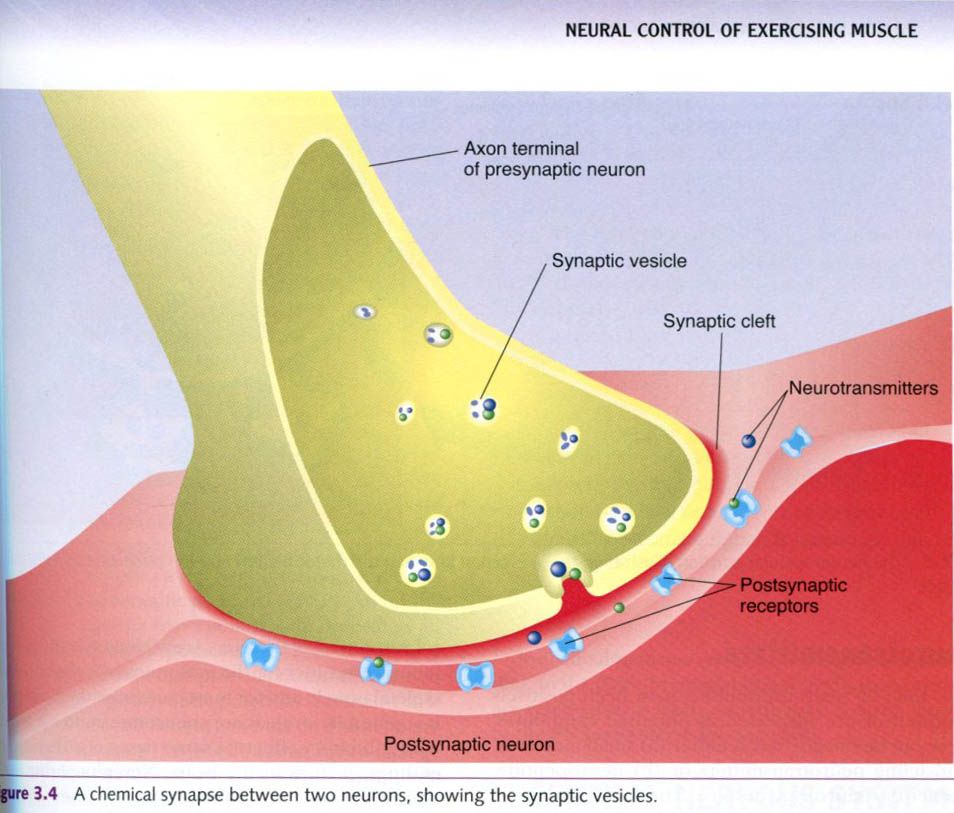Neurons communicate with each other across
synapses. A synapse is the site
of action potential transmission from one neuron to another. There are both
chemical and mechanical synapses, but the most common type is the
chemical synapse, which is our focus. As seen in the figure up, a synapse
between two neurons includes:
- The axon terminals of the
neuron sending the action potential;
- Receptors on the neuron
receiving the action potential, and
- The space between these structures.
The neuron sending the action potential
across the synapse is called the presynaptic
neuron, so axon terminals are presynaptic terminals. Similarly, the
neuron receiving the action potential on the opposite side of the synapse
is called the postsynaptic receptors.
The axon terminals and postsynaptic receptors are not physically in contact
with each other. A narrow gap, the synaptic
cleft, separates them.
The action potential can be transmitted
across a synapse in only one direction: from the axon terminals of the
presynaptic neuron to the postsynaptic receptors, usually on the dendrites, of
the postsynaptic neuron. Impulses also can go directly to receptors on the
cell body: about 5% to 20% of the axon terminals are adjacent to the cell body
instead of the dendrites. Why can the action potential go in only one
direction?
The presynaptic terminals of the axon contain a
large number of saclike structures, called synaptic
vesicles. These sacs contain neurotransmitter chemicals. When the impulse
reaches the presynaptic axon terminals, the synaptic vesicles respond by
dumping their chemicals into the synaptic cleft. These neurotransmitters then
diffuse across the synaptic cleft to the postsynaptic neuron’s receptors. The
postsynaptic receptors bind the neurotransmitter once it diffuses across the
synaptic cleft. When this binding occurs, the impulse has been transmitted
successfully to the next neuron and can be transmitted onward.










0 коментара:
Постави коментар